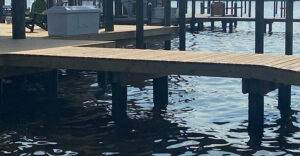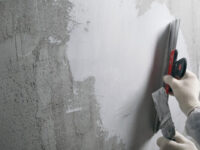Boat Dock Construction
Boat docks serve a multitude of purposes. It is important to understand the full scope of functionality and work it into your dock design. For more information, read on Boat Dock Construction Charleston SC.
Many lake property owners use wood decking for their docks. Traditionally, this is pressure-treated wood.
However, homeowners are increasingly moving away from traditional pressure-treated wood for dock planking because of performance concerns.
When it comes to boat dock construction, there are many different materials to choose from. Each has its own unique advantages and drawbacks. It is important to consider all of the options and decide which material will best suit your specific needs. A good start is to contact a local dock builder who will be familiar with the water conditions in your area.
A wooden dock is both functional and beautiful, offering a natural appearance that can complement the surrounding environment. Wood docks require some maintenance to keep them looking their best, but with proper care, they can last a long time.
In order to prevent rot, a wooden dock must be treated or stained annually with a water sealer. This is especially important in salty or brackish waters, where the water may be more corrosive. Pressure-treated pine is a common choice for a residential dock, but it can be susceptible to splintering over time and requires a regular application of water sealer.
Aluminum is a strong, lightweight option for both fixed and floating docks. It is corrosion-resistant and can be used in fresh, salty, or brackish water. It can withstand heavy traffic and is a popular choice for marinas and public docks because it can be easily fabricated to meet the needs of individual waterways. It is more expensive than other materials, but it can last a lifetime with minimal maintenance.
Steel is the sturdiest and strongest option for dock pilings, but it is not ideal for use in floating docks because it is too heavy. Steel is also more vulnerable to corrosion than other materials, but it is a great choice for permanent and commercial docks because it is very durable and can withstand the elements. It is fastened with blind bolts, which are safer than screws for use in marine environments.
Design
Building a dock is a large-scale project that requires considerable planning and decision-making prior to starting construction. Many choices must be made about the type of dock, materials used, electrical capabilities, and budget. There are also other considerations, like permits and inspections, that must be taken into account.
The best way to start planning a boat dock is to determine its intended purpose. It is important to consider factors like the number of boats that will be moored on the dock, how often they will be used, and what activities will take place on the dock. These factors will help determine what type of features are needed on the dock to make it functional and safe.
Depending on the location and climate, there are several different types of docks that can be built. These include pipe docks, floating docks, and piling docks. These docks are built using airtight barrels or drums that float and can support a certain amount of weight. They are great for areas with a fragile underwater ecosystem and variable water levels.
Another type of dock that is popular is the pier-style dock. These are built in the same way as a typical deck, with the frame created first and then the decking applied to it. These types of docks are great for fishing and swimming. However, they are not suitable for use with larger boats.
One trend in boat dock design is to build seating directly into the structure of the dock itself. This eliminates the need for extra furniture that will quickly wear out and require replacement in a waterfront setting. The seating is usually built from modified wood boards.
If you are interested in learning more about the design process for a custom dock, check out this video from YouTube. The YouTuber walks you through the entire process step-by-step, including the supplies and measurements that are needed to build a dock. He also gives you a few tips on what to look for when choosing a contractor for your dock. This will ensure that your new dock is built to last for years to come.
Safety
When building a boat dock, there are several safety precautions that should be taken. These include ensuring that all workers wear proper clothing, including personal protective equipment (PPE), as well as keeping all electrical wiring away from water. This will ensure that if there is an accident on the dock, it will not result in fire or shock. It’s also important to have a first aid kit and ensure that everyone knows how to use it.
Another way to improve boat dock safety is to make sure that stairs and ladders are always safe and working properly. Crappy or wobbly steps and ladders can cause a lot of damage if someone falls on them, so it’s important to get them fixed immediately. This will help prevent injuries and make the dock more comfortable for people to use.
The type of material used for the dock should also be considered. Wood is a traditional option, but it can be susceptible to insect infestations, rot, warping, and splintering. Concrete is a much more durable choice, but it can disrupt the environment. Aluminum is a strong, lightweight option that lasts for decades, and it can be made from recycled materials to make it an environmentally friendly choice.
It’s important to consider the location of the dock as well, because this can affect how easily it can be accessed. It’s generally best to build a dock that is at least as high as the water level in order to avoid flooding. If possible, it’s also a good idea to build a floating dock that can move up and down with changing water levels.
The dock is a great place for family and friends to spend time, but it’s essential to establish some dock safety rules. It’s easy for children to slip and fall, and even adults can suffer serious injuries if they trip on a loose board or rotting deck. Regular cleaning is important, too, as it will reduce tripping hazards and keep the dock looking its best.
Maintenance
A dock that is not maintained properly can become dangerous and unusable. Regular inspections, cleaning, and protection from the elements will extend its life and allow it to serve as a place of leisure and fun for years to come.
Structural supports are the backbone of a dock, whether it’s floating or fixed. The best type of support will depend on the water depth and conditions where the dock is located. For example, in deep lakes, pilings can be sunk to anchor the dock so it doesn’t move as the water level rises or falls. For a lake with relatively shallow waters, concrete posts might be the right choice because they can withstand heaves and other movements of the water.
Pilings and posts can be made of wood, concrete, or aluminum. The material will dictate how long the structure will last, and it’s important to choose the right one for a particular application. For instance, if a dock will be regularly exposed to the sun, using an aluminum frame might be a better idea than a wooden one. Aluminum doesn’t corrode as easily, and it can be used to make sections of the dock that are out of the way or will not be part of boat traffic areas.
If a marina dock is located in an area with strong winds and heavy wave action, it may be necessary to add extensions to the main section of the dock. These “fingers” help protect the boat dock from buffeting winds and waves caused by passing boats. They also offer extra stability for moored boats.
In addition to inspecting the dock on a weekly basis, it’s also important to check any electrical systems and look for corrosion or damage. Electrical components are not designed to be in constant contact with water, and they can become damaged by salt spray or the presence of water.
It’s also a good idea to periodically inspect the area around a dock to remove organic growth like algae and barnacles. While these organisms are harmless to humans, they can cause damage to a dock’s surfaces and cause them to deteriorate more quickly. A safe cleaner can be used to remove them, and it’s important to use a chemical that will not harm the dock’s materials or the environment.





